SKOVENS ARENA
A team of British architect Zaha Hadid in close collaboration with architecture and engineering consultancy Sweco and Tredje Natur architects has won the competition of ...

Responsible Partners: Ole Schrøder and Flemming Rafn Thomsen
Design Team: Johan Kure, Christian Kuczynski, Sofie Mandrup Andreassen, Anna Sissela Michalsdotter, Bartosz Swiniarski, Manabu Yamaya, Mónica Galiana, Jakub Włodarczyk, Joan Melgaard Rasmussen, and Agnete Schimmell Raakjær
Client: Pia Klee v. DWF, Rethink Water, State of Green
Collaborators: Lifted, We Love People
Project period: 2012 – 2014
Project: Building hybrid
Type: Commission
“Water is essential for all living things – even in the city! By making and integrating the city’s water solutions in our strategies, we create both magical experiences and a variety of pragmatic potentials. Utilizing water creates potential for meeting places that are rich in experience to strengthen the cohesion and thus the sustainability of the city.”
– Flemming Rafn Thomsen, Founding Partner in TREDJE NATUR
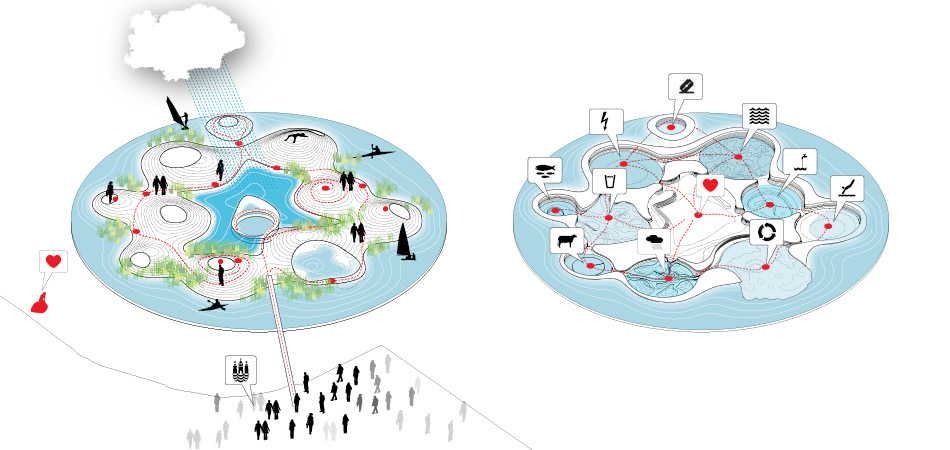
With the world’s longest coastline per capita and a landscape shaped by the last ice age, water has always been fundamental to how Danes live in the world. Nature has always been a prerequisite for the development of our knowledge and the creation of our technologies. We call it a learning landscape. A landscape where the world learns about what we are good at and where we can learn how to even better help other nations with their water challenges. HOW is a Copenhagen demonstration landscape with a global scope, presenting the fundamental premise that water is essential for all life. 70% of the earth is covered by water, but only 2.5% of this amount is freshwater, and less than 1 % of this water is available for humans, animals, and plants. In the future, it will really be a battle for the one percent. Explosively growing populations, greater prosperity, and urbanization will cause the demand for clean water to increase dramatically even before the next ten years. According to the UN, the world’s water consumption will be 30 percent greater in 2030, and ‘business as usual’ will consume approximately 40 percent more fresh water than is being replenished.
Behind the Rethink Water-initiative eare more than 60 companies, utilities, and organizations linked to the Danish water sector and the City of Copenhagen. The initiative is part of the State of Green, Denmark’s official green brand. The project is supported with over 1 million dollars by the Marketing Denmark Fund under the Business and Growth Ministry.
Water should be a strong pillar and a significant element in Denmark’s green brand. House of Water develops a strong platform for international branding and marketing of Danish water expertise. The activities of the House were developed in collaboration with some of the best creative minds in the field, with the goal to redefine water through innovative approaches.

TREDJE NATUR proposes a landscape wrapped around a central water reservoir – symbolizing a drop of fresh water in a sea of salt – thereby making visible how clean water is both a scarce and valuable resource.
Water is essential for all life. Based on an interpretation of Danish landscapes, TREDJE NATUR creates an inviting waterscape. That we sense we remember. Therefore, the phenomena of nature and Danish geological history inspire the presentation of information and knowledge about water.
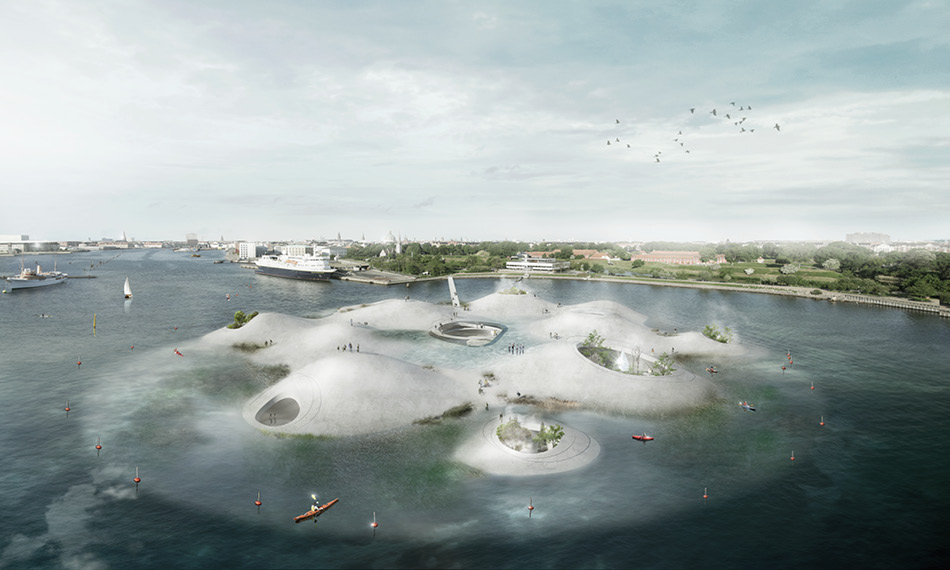
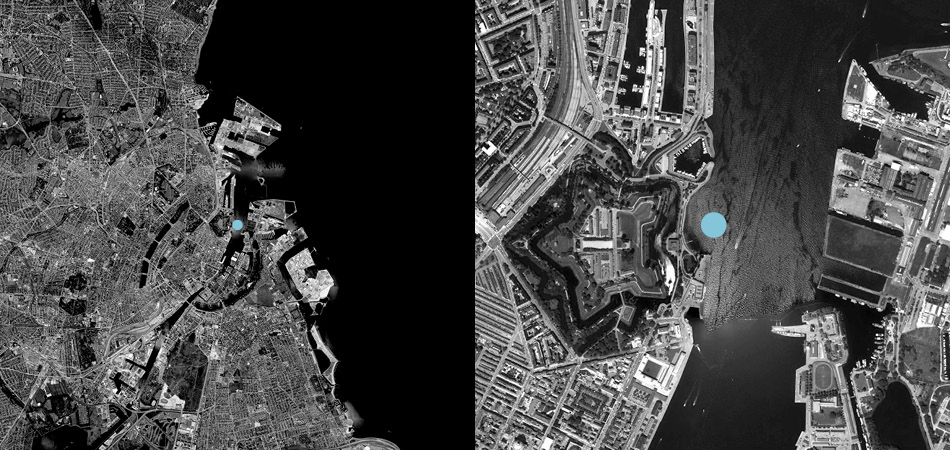
– China is faced with some enormous challenges, which we in Denmark are experienced with. We are in fact among the World’s best to come up with solutions that can minimize water loss or clean polluted water. China is investing on a scale that is almost unimaginable. They have an ambition to invest one billion Danish kroner in water technology every single day and Danish companies should profit the most from this. – Kirsten Brosbøl, Environmental Minister.
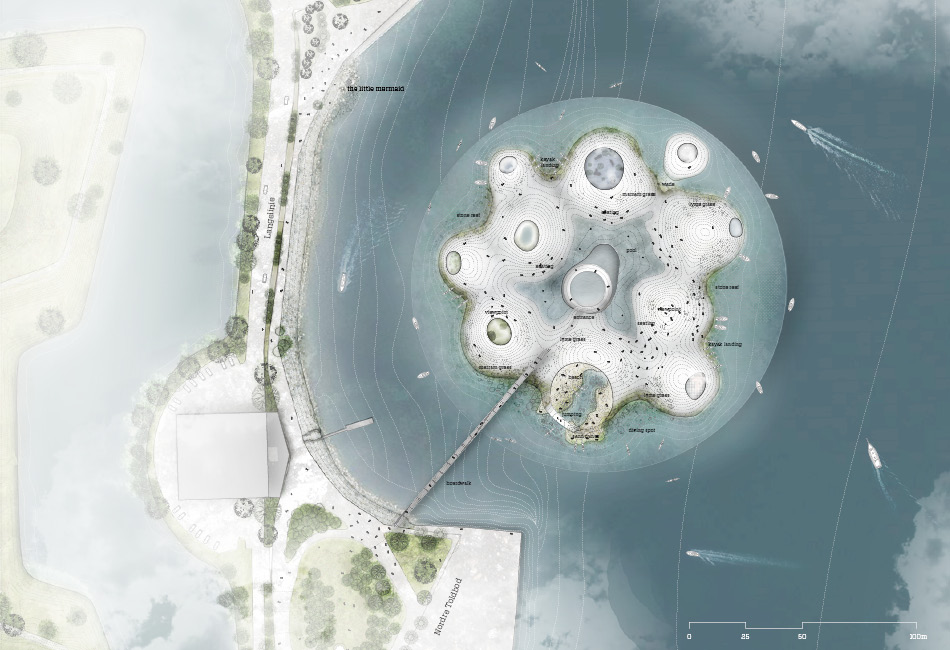
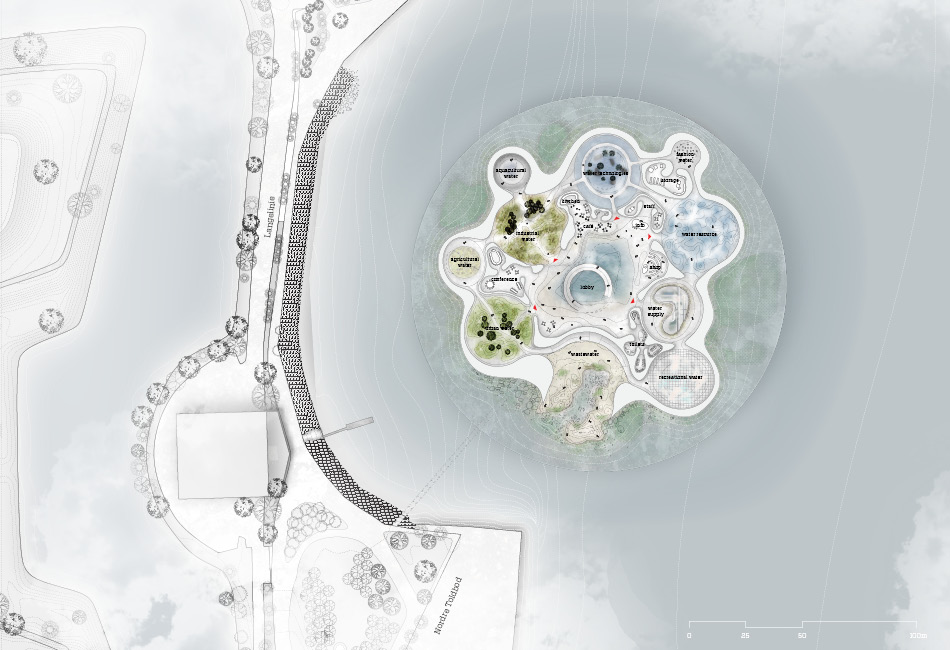
A THOUSAND WAYS TO GET WET
AN URBAN WATER LANDSCAPE
House of Water offers a thousand ways to get wet, and a thousand tales of water in the city. House of Water is a place to meet, a place to explore, and a place to create new knowledge. The house creates an inviting landscape, where the unique Danish understanding of technology is demonstrated to visitors encountering water in various forms. Port of Copenhagen is world renowned for its clean water, so the house’s curved surface provides generous access to the sea. The main freshwater reservoir collects rainwater, which is heated by waste heat, allowing the House of Water to support a year round bathing season. The house’s surface is covered with active limestone that cleans rainwater naturally. Thereby, the house is participating in making Copenhagen a more natural, healthy, and sustainable city.
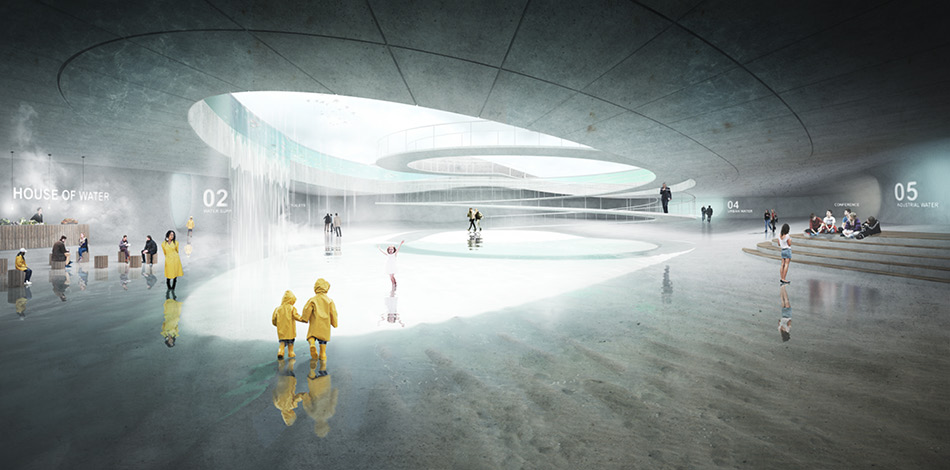
ROOM 1 – LOBBY
The lobby is the public gathering place in the heart of the House of Water. The descent is via the central circular ramp in the middle of the house. Excess rain water from the reservoir creates a cascading water curtain that fills the lobby floor with a thin film of water. Curious visitors are invited to ‘walk on water ‘ in a kaleidoscopic compartment that provides access to the house’s many levels. It also offers visitors a steamy soup kitchen serving urban farmed oysters, fish, and seaweed from the harbor.
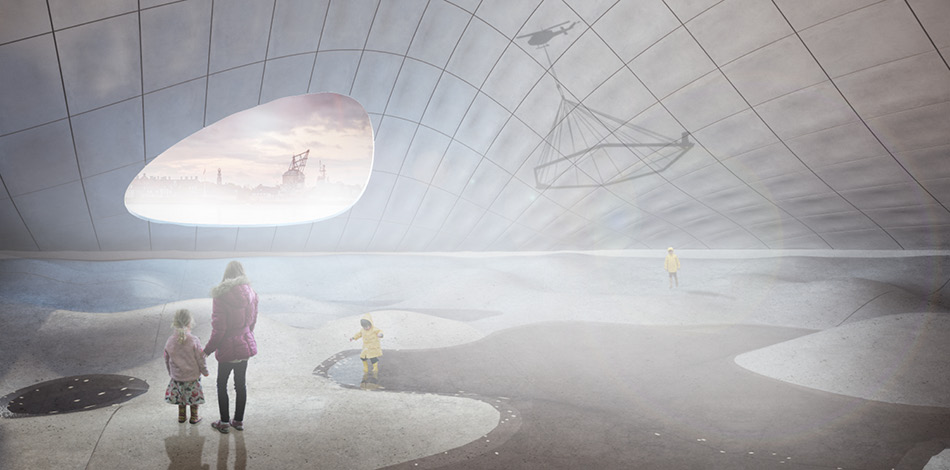
ROOM 2 – WATER RESOURCES
Providing enough fresh water for a growing population and increasing industrial production, is a critical issue in many countries. Climate change is affecting global rainfall patterns and water distribution. Since there is approximately 100 times more groundwater on Earth than fresh surface water, it makes sense to utilize groundwater as a source of water. In many parts of the world, especially in arid or seasonally dry regions, groundwater can provide a stable and sustainable source of high quality water. Actually, some countries still rely on witch doctors to find water. Denmark utilizes new airborne technology to locate groundwater from the sky.
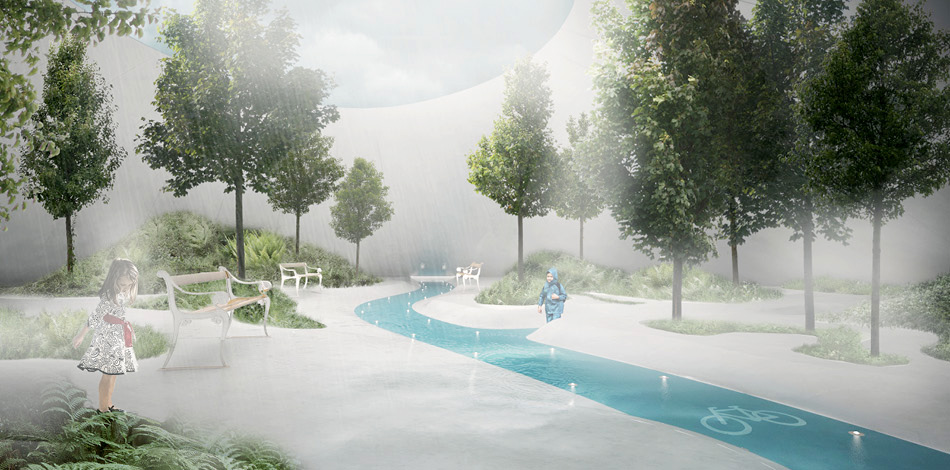
ROOM 3 – URBAN WATER
Cities are growing. Today’s urban population of 3.2 billion will rise to nearly 5 billion by 2030, by which time three out of five people will live in cities. Added to this, many cities face additional pressures of rising sea levels and extreme weather events, bringing with them the risk of flooding and droughts. In dry periods temperatures may rise even further, due to the urban heat island effect. The integration of water solutions with urban development is a way to reintroduce water as an asset in urban living. By working with natures principles, Denmark brings inspiring water experiences to the city as we climate adapt the urban fabric.
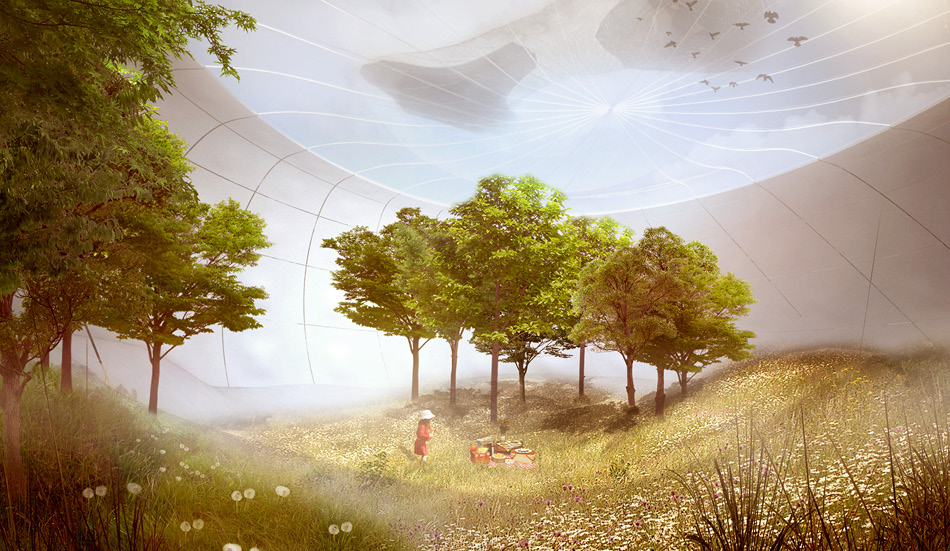
ROOM 4 – INDUSTRIAL WATER EFFICIENCY
The availability of water will be a critical issue in the future, and the cost of water will rise. With higher living standards and a global population predicted to reach 9 billion people in the next few decades, the demand for water will increase significantly. The House of Water aims to make indirect water use visible. Nearly three-quarters of total water consumption in the world relates to the consumption of food and drink, and the United Nations has estimated that before 2030, water consumption will rise by 30 percent. Therefore, the water footprint of food products will garner more attention from consumers, and become more present on political agendas in the near future.
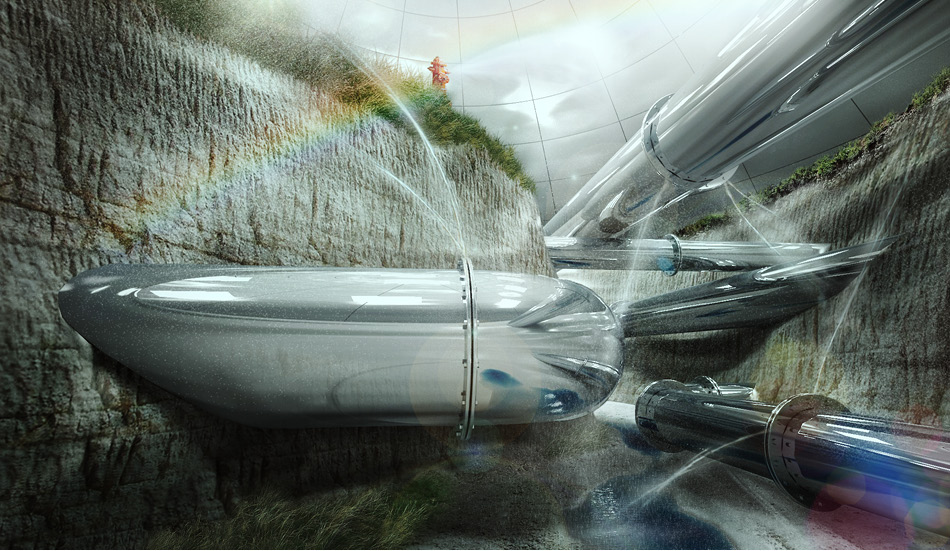
ROOM 5 – WATER SUPPLY
Copenhagen has very little water loss, but in many countries a mind-blowing percentage of fresh water is lost on its way to the consumers. Globally, this loss amounts to a magnitude of 25 to 50 percent of the total distributed water. For the water utilities facing an increased demand for water, an important gap to close is the considerable difference between the amount of produced and distributed water, and the volumes billed to the consumers. This difference is known as Non-Revenue Water (NRW) or urban water losses. The causes are inaccurate billing and metering systems, deteriorating water distribution infrastructure with high levels of leakages, too high water pressure, reservoir overflow, flushings, and illegal connections.
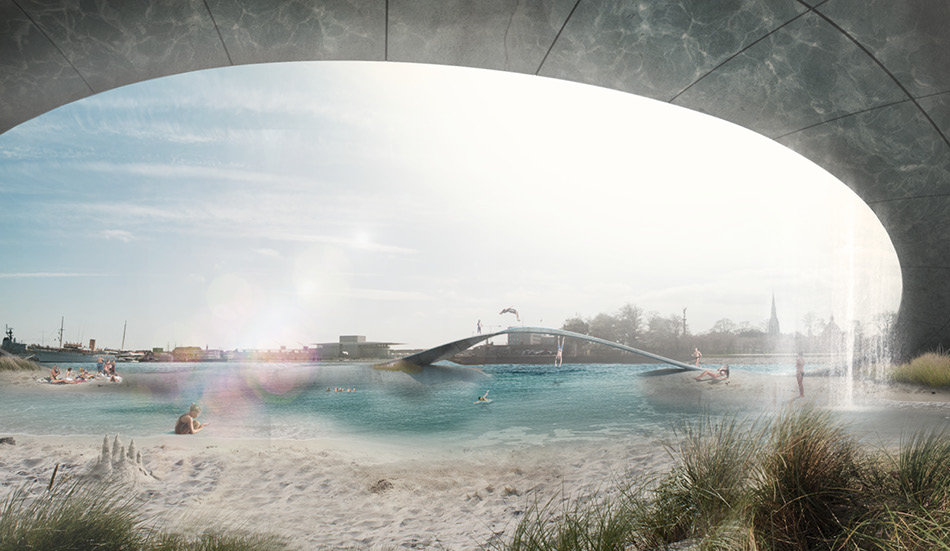
ROOM 6 – WASTE WATER
By controlling the waste water, we can restore the city’s harbor water and create new urban aqua farms of oysters and fish. Treating waste water is energy intensive, but waste water is an energy resource on its own. Strict environmental regulations have forced companies in Denmark to think differently and develop new water efficient technologies. An outstanding example is in the primary production of salmon, a fish highly valued in many countries. Intensive recirculation technology in salmon farms, means that salmon are now reared using only 250 liter of water per kilo of fish with a minimum of wastewater. This compares with 50,000 liter per kilo with traditional circulation technology, which often pollutes the surrounding water. This salmon breeding technology is now used in Chile, Canada, and Russia and will shortly be used in the Gobi desert in northwestern China, close to Mongolia, where it rains only 50-100 mm (2-4 inches) per year.
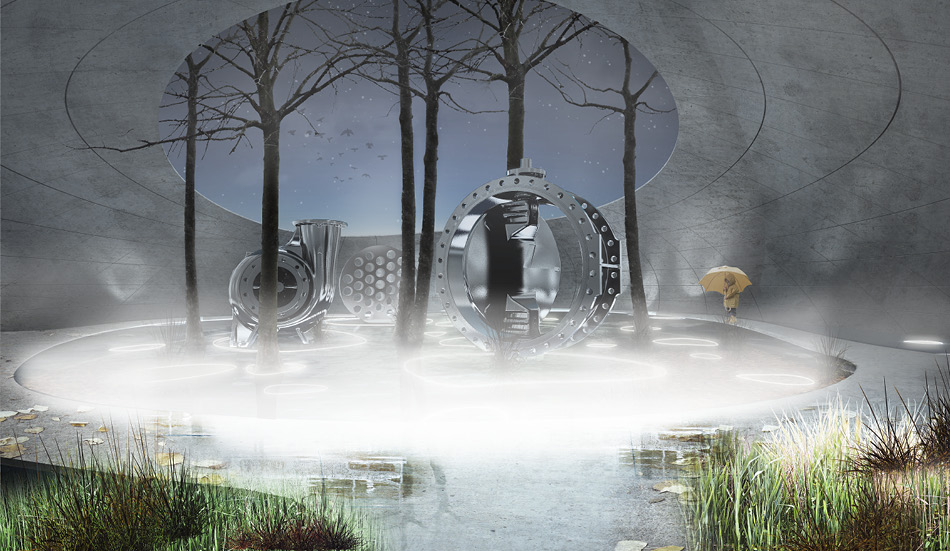
ROOM 7 – WATER TECHNOLOGY
The House of Water showcases the normally hidden technologies in a fairytale-like setting – bringing back the magical fascination of cutting edge technology. For decades, Danish food and beverage industries have shown their skills in developing new products and increasing production, despite facing rising water rates and stricter disposal regulations. The demand for water in urban water supply varies widely throughout the day and even over the course of the week. One of many positive results is the ability to control water supply pumps, thus reducing water leakages.
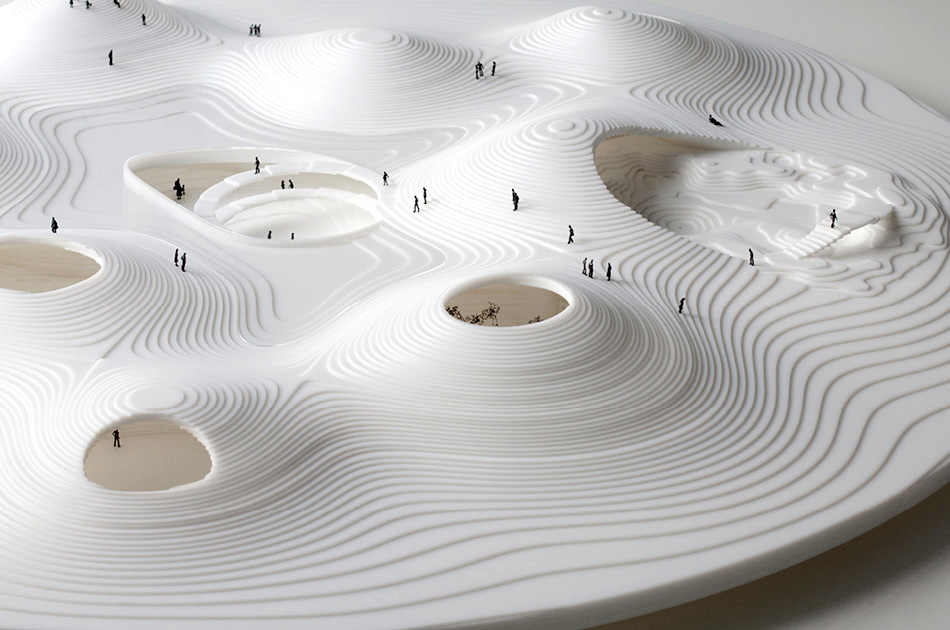
Global investments in water and water technology have reached a level that is three times greater than the wind industry. The worldwide water market grosses hundreds of billions of dollars annually, and will surely grow along the increasing demand for clean water. There is, therefore, an enormous growth potential for the development of sustainable water technology, and Denmark is becoming a frontrunner. The ambition of the water industry, politicians, architects, and other stakeholders, is to make Denmark a focal point for the development of intelligent sustainable water technology solutions.
By combining Danish companies’ highly developed knowledge of water technologies, with the creation of new recreational blue spaces, Denmark can showcase a demonstration landscape for sustainable water technology. The direct experience and opportunities this technology creates for recreational activities will strengthen the branding and know-how of this industry. At the same time, the useful and recreational blue urban space is a reminder for us Danes about the invisible consumption we have of the world’s scarce water resources – not in the form of a lecture, but by making it clear that in Denmark we can actually make a difference here and now.
The major culprit is the production of food, which accounts for up to 80% of the world’s water consumption. Calculations show that a person consumes 100-400 liters of water per day, while production of the daily amount of food for the same person consumes between 2000-5000 liters of water! The production of a single egg can be used as an illustrative example of the huge water consumption in food production – it takes 450 liters of water
In Denmark we are lucky. We have access to vast reserves of clean groundwater and are therefore not dependent on having to clean surface water, as many other countries. Despite this, we are still responsible for the unsustainable use of water – consumption which for us is invisible, but creates major problems in other parts of the world. The overuse is “hiding” in a number of consumer goods we import from abroad. This external water consumption represents 62% of our total consumption, meaning Danish water consumption exceeds the water resources we ourselves possess. Therefore, in Denmark, we are also dependent on other countries’ water resources to sustain our current lifestyle.
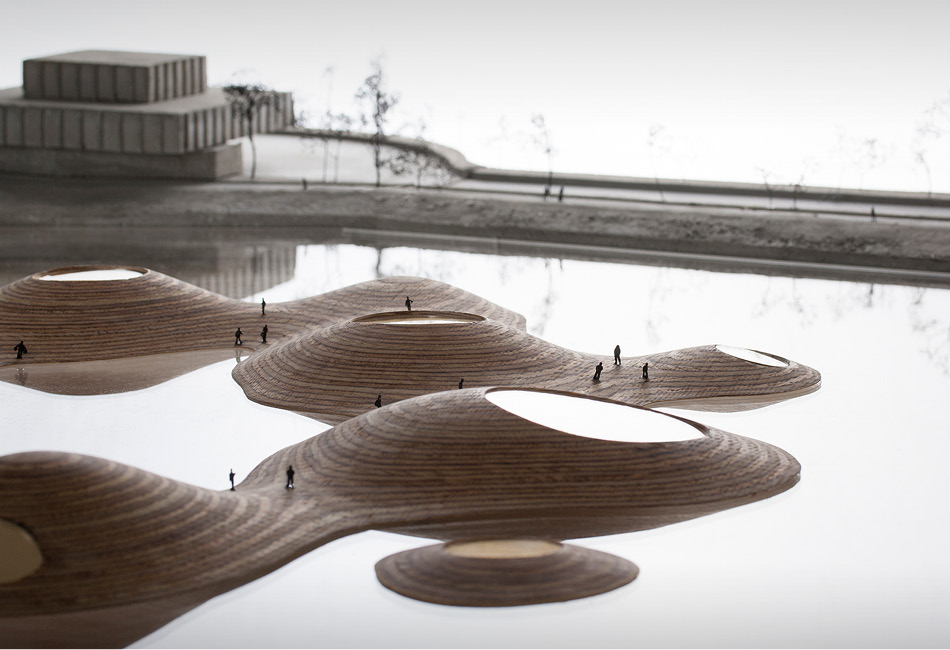
A team of British architect Zaha Hadid in close collaboration with architecture and engineering consultancy Sweco and Tredje Natur architects has won the competition of ...
We have created 'Undergrowth' - a vision for transforming Kongelunden in Aarhus, Denmark. With Undergrowth we have made a regenerative strategy that supports nature’s ability ...
The future neighbourhood – Lynetteholm – will be a vital part of the climate- and flood protection of Copenhagen and create space for more than ...
In THE BLUE RAMPARTS, we have worked with the area Damsterdiepzone in Groningen - an area that accommodates industry, housing, and businesses. In our vision ...
Ugakei Circles is a sustainable tourism project located on the fringe of one of Japans most populated areas. The project marks a new shift towards low impact regenerative tourism
In a new grand vision for the 40-hectare future development area, Dokken in Bergen, Norway, Third Nature shows high ambitions for the regenerative city in an old logistics port and ferry terminal.
The historical Enghavepark has been transformed and is now the biggest climate project in Copenhagen. With a 22.600 m3 water reservoir, the park is answering a need to handle Copenhagen's current and future challenges with water.
The Norra Bunkeflo area in Malmö, Sweden, can become a sustainable model example for the realization of the UN's World Goals and how we can live up to the 2030 goals of the Paris Agreement.
‘New Angle’ shows how the SDG’s can be translated into practice in the construction industry. It is estimated that the project represents a CO2 saving of 30-50%.
With CPH Common House we propose the world's first upcycled high-rise building
With our master plan for Adamstuen in Oslo, we show that it is not necessary to make a compromise between building and biology in order to achieve an architectural balance in a master plan
ARKENWALK is an ambition to unite art and city with a path that anchors Arken Museum as the town’s urban generator
With the proposal `Karnappen' we have created a distinctive landmark with a green and vibrant facade for Grønttorvet in Valby, Copenhagen
The isolated Vridsløselille State Prison is rethought inside out to become an active and integrated part of the surrounding city life in Albertslund
THIRD NATURE and COWI have made a feasibility study for the City of Copenhagen, highlighting the possibilities and consequences of establishing a traffic tunnel below Åboulevarden
New Islands Brygge School has the potential to become a new and highly interconnected link between the harbor, the nature and the city
The Water Culture House integrates water activities with the cultural and popular everyday life by the harbor and creates unique and distinctive experiences
We create a new and green gathering point in Hyllie that with a station building, housing and a station square strenghtens a livable, diverse and vibrant city life
THIRD NATURE releases a groundbreaking solution to major cities' challenges with flooding, parking and lack of green spaces
With Kunskabsberget, TREDJE NATUR has designed an open, safe and flexible learning environment, with a clear local presence
Værløse Airfield has great potential for creating a grounded everyday life with nature at its core
TREDJE NATUR have created a new masterplan for “Svanemøllens Kaserne” with an understanding of the areas special history as its starting point
The station at Klostergården is a visionary infrastructural project that shows how the construction of a new station can lift up and rethink an entire neighborhood in a city
In the heart of Nordhavn lies the historic port of Copenhagen, Kronløbsøen. A new island rising from the harbour as an alluring mirage
TREDJE NATUR has together with C.F. Møller and Rambøll come up with a new holistic vision for a close sustainable Gustavsberg from the basis of the place’s original and forgotten nature.
TREDJE NATUR and C.F. Møller wins The Future Sølund. Along with Bascon, Transsolar and Smith Innovation they draw and will build one of the largest and most visionary residential projects seen in the history of Denmark
Papirøen has a unique placement in at the inner part of Copenhagen harbour. There is a lot of potential on this prime location setting the bar high on the subject of Copenhagen future city- and nature developments.
TREDJE NATUR have designed a proposal for a new pedestrian and cyclist bridge in Sydhavnen
TREDJE NATUR wins ambitious project on Nordhavn's best building site. On the tip of Redmolen surrounded by water on three sides, a prestige building and urban space is now in the making.
CBS in the city - The city in CBS! Our dogma is about developing CBS as a campus that is integrated into the city
TREDJE NATUR continues to build on the Copenhagen climate adaption plan, and joins the water investment with new strategies for nature, life and community in the city.
Vinge is not just inspired by nature, it is a city which works with nature’s processes and creates nature.
TREDJE NATUR's plan revives Bryggens Bastion with green and blue elements as the central values in the neighborhood. A connecting corridor in the project becomes the neighborhood’s new hub.
TREDJE NATUR won 2nd place in the Middelfart Climate City competition, along with Entasis and Grontmij.
TREDJE NATUR designs a collaborative platform presenting new solutions to future water challenges
Our winning proposal for the development of Almegård Barracks is based on a holistic, local concept where the main transformative force is found in the individual users and inherent qualities of the site.
Tredje Natur thinks Copenhagen’s Harbor should be a lively, accessible, productive and recreational area in the city.
The climate district in Østerbro shows the climate adaption of the future and the development of the existing city.